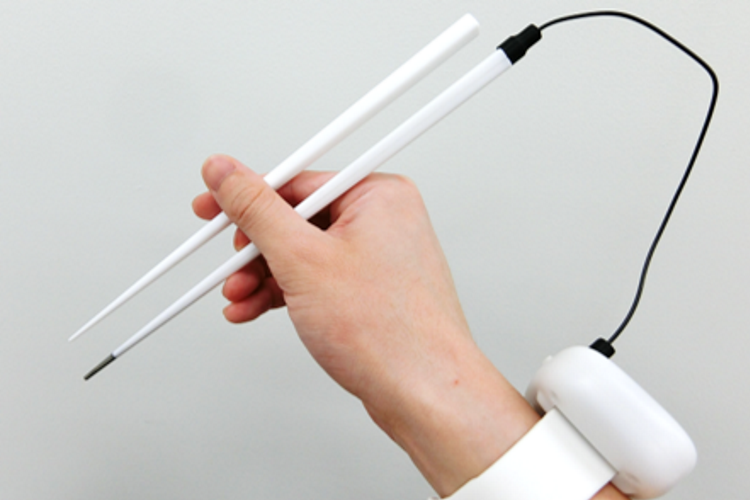Electrified cutlery could help salt reduction efforts

Past studies have described how introducing a weak electrical current to the tongue can affect the charged ions that make up sodium chloride to either inhibit or enhance saltiness and other taste sensations.
With this in mind, researchers at Meiji University and Japanese food and beverage company Kirin designed a chopstick-like device that uses a weak electrical charge to stimulate how the tongue experiences saltiness.
They then gently zapped their own taste buds before testing the effects of the electrified chopsticks in an experiment involving 31 people previously or currently on a low-sodium diet.
Shocking research
Each person tasted and rated the saltiness of several saltwater gel samples that had two different levels of saltiness. The results showed that electric stimulation enhanced the saltiness of the low-sodium sample, making it comparable to the control sample, which was 40% or more saltier. In other words, electrified chopsticks or other utensils could reduce salt intake by 30% without sacrificing saltiness.
The discomfort caused by electrical stimulation was not severe enough to be a problem for most participants. More than 80% of subjects said they could tolerate the electric stimulation on a daily basis.
Electrical stimulation of the tongue through a chopstick-shaped utensil may even potentially enhance the savouriness of low-sodium food, the scientists claimed.
In a second qualitative experiment, the participants consumed a low-sodium miso soup, which many found had a better mouthfeel and taste, suggesting that electric taste stimulation may also affect umami, according to the paper. Umami is a fifth sensory taste often described as savouriness.
A drastic solution salt reduction is essential
Salt reduction offers an important opportunity to improve population health. In the UK alone, the average person in the UK is thought to eat around 8.1g salt a day. This value has reduced by 15% over the last decade, primarily due to product reformulation, whereby the food industry has gradually reduced the amount of salt added to their food.
But UK salt consumption is still more than a third more than the maximum recommended intake of 6g a day, putting people at increased risk of suffering later on in life. If consumers cut their daily intake from the average 8.1g a day to the recommended 6g a day it would reduce strokes by 22% and heart attacks by 16%, claims health campaigner Action on Salt.
The long-term goal of the scientists behind the project is to develop a commercially available chopstick-shaped device for daily use by those following a low-sodium diet or trying to reduce their salt intake.
“Most people consume about twice the recommended maximum level, meaning such a utensil could help reduce health conditions like high blood pressure,” said lead author Yoshinobu Kaji, a master’s student in the Graduate School of Advanced Mathematical Sciences at Meiji University.
“This standard cannot be met with a little effort in salt reduction, and a drastic solution is essential. This study is an important approach because it suggests that a 30% reduction in salt can be achieved by electrical stimulation.”
Kaji told FoodNavigator a European adaption was not out of the question. “I believe that devices that help reduce salt intake can be made in the form of spoons and forks,” he told us. “Then people in the European region could take advantage of it.”
From diet to virtual reality
In addition, the researchers at Miyashita’s lab at Meiji University are investigating applications in other fields, such as stimulating taste as part of a virtual reality experience.
“In the future, for example, it may be possible to virtually reproduce the taste of food and drink, or to realize taste expressions that are difficult to achieve with conventional eating experiences,” Kaji said.







